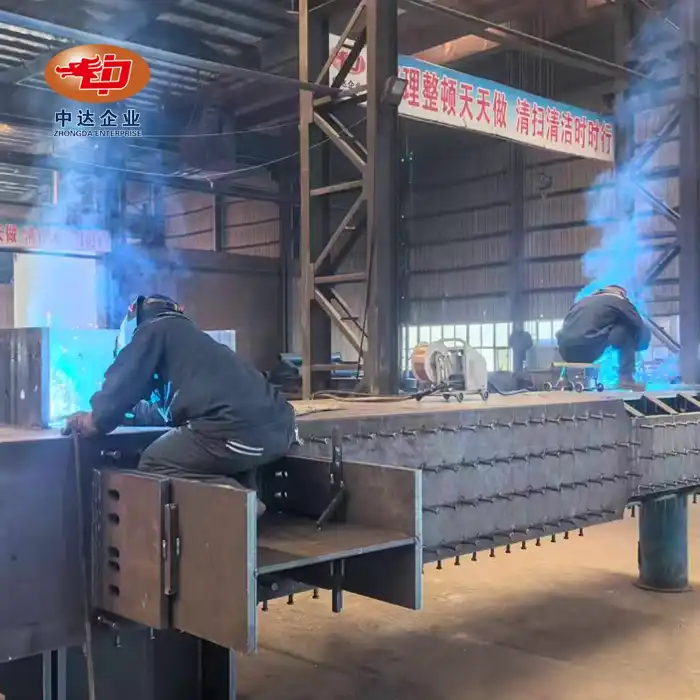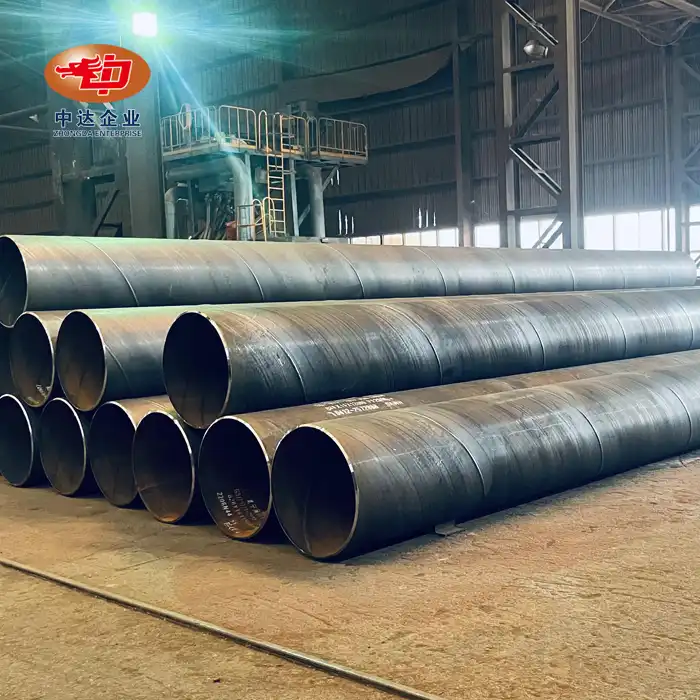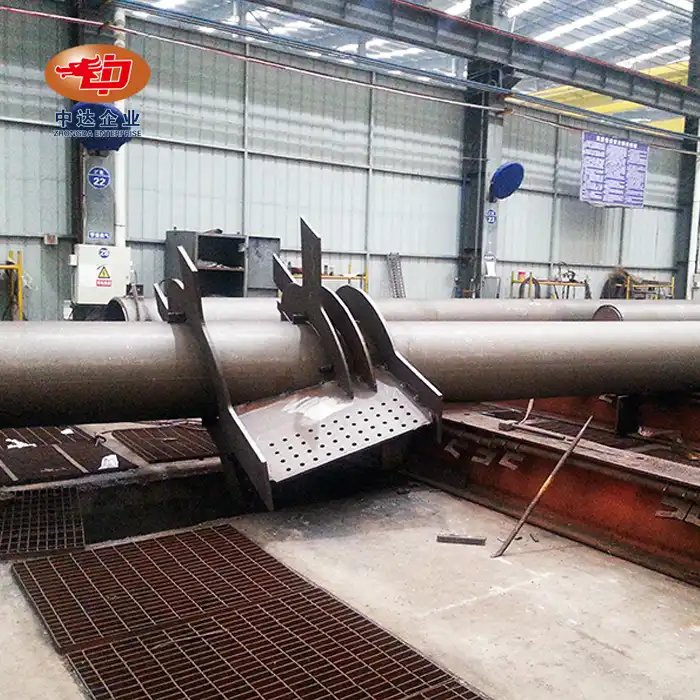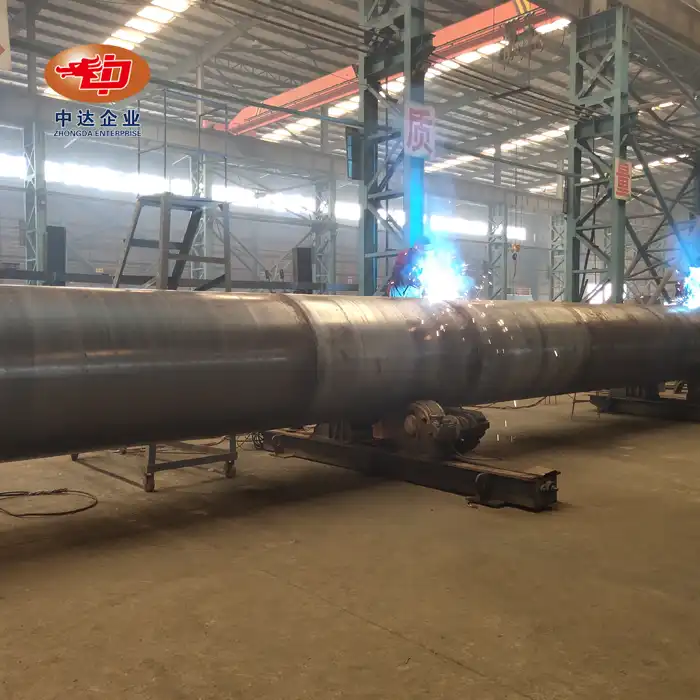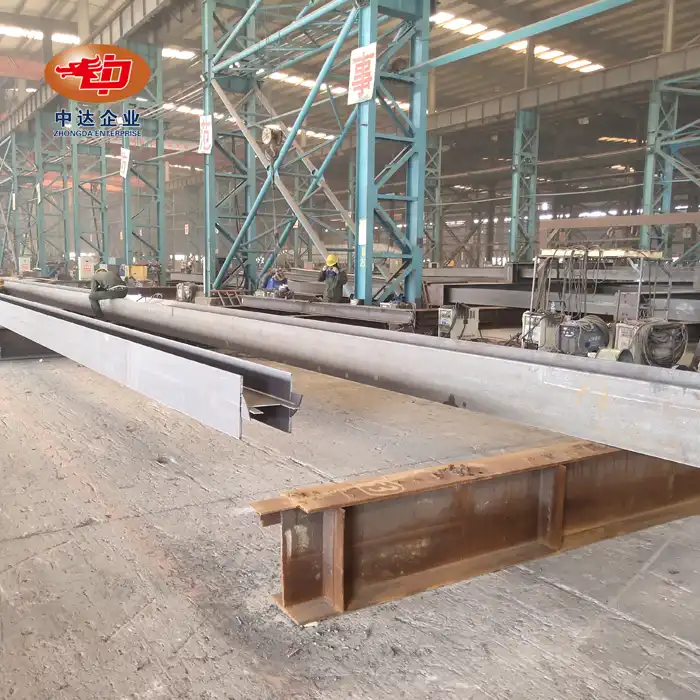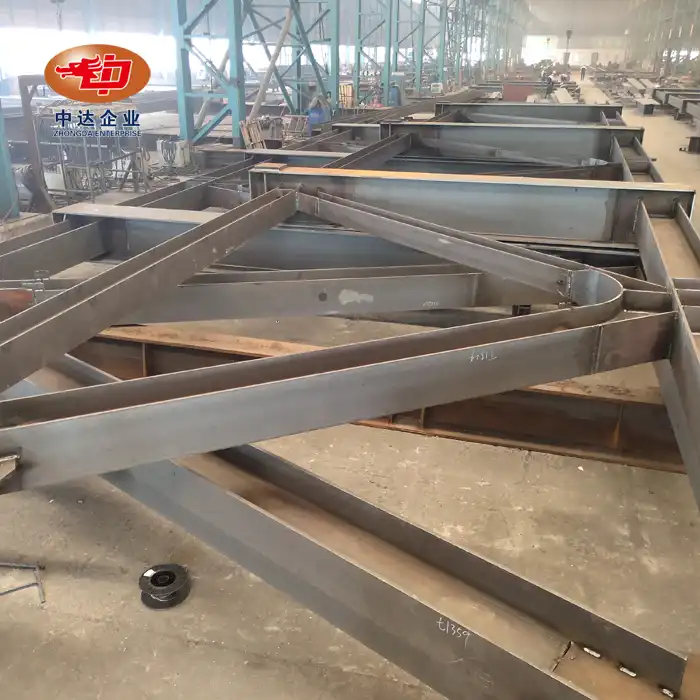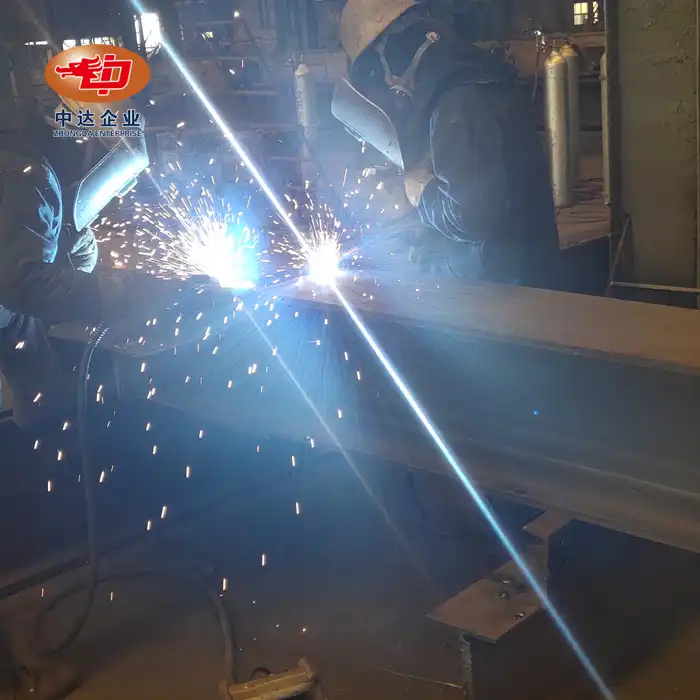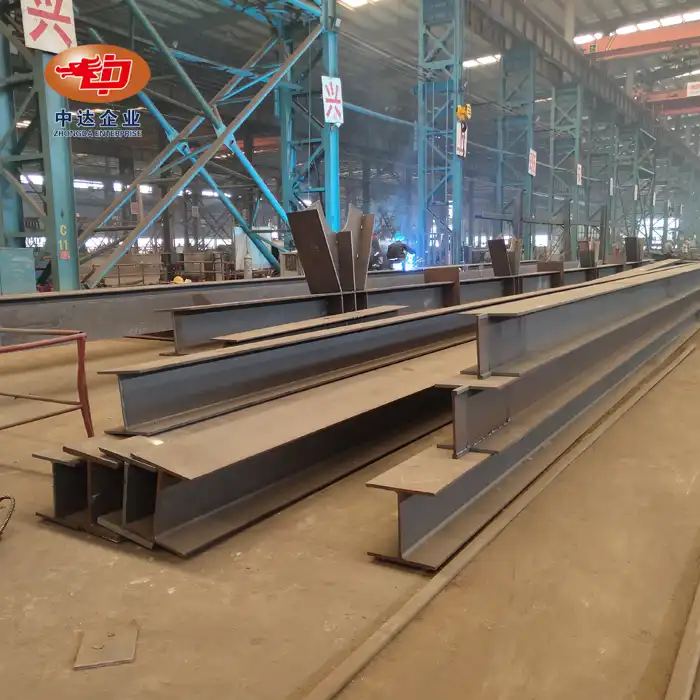
How to Prevent Steel Corrosion in SRC Composite Beams? Does Concrete Cracking Affect Durability?
SRC composite beams are essential structural elements that combine the strength of steel with the durability of concrete. Preventing corrosion in these beams is crucial for maintaining their integrity and longevity. The primary methods to prevent steel corrosion include surface treatment of steel components, applying protective coatings, and ensuring adequate concrete cover. While concrete cracking can potentially affect durability, proper design and construction techniques can minimize this risk. By implementing comprehensive corrosion prevention strategies and addressing concrete cracking concerns, the durability and performance of SRC composite beams can be significantly enhanced.
At Zhongda Steel, we understand the critical importance of corrosion prevention in steel structures. Our expertise in precision steel solutions, including our innovative -60°C Weathering Steel Anti-corrosion Technology, positions us as a leader in delivering durable and high-performance steel components for SRC composite beams. With our state-of-the-art facilities and commitment to quality, we ensure that our steel products meet the highest standards for corrosion resistance and structural integrity.
Corrosion Prevention Strategies for SRC Composite Beams
Surface Preparation and Treatment
Effective corrosion prevention begins with proper surface preparation of steel components. At Zhongda Steel, we employ advanced techniques to ensure optimal surface conditions for corrosion resistance. Our process involves sandblasting the steel surface to achieve a Sa2.5 grade finish, which provides an ideal foundation for protective coatings or galvanization.
Following surface preparation, we apply specialized treatments to enhance corrosion resistance. One highly effective method is the application of zinc-rich epoxy primer. This primer forms a protective barrier on the steel surface, with a typical thickness of 80μm. Alternatively, hot-dip galvanization can be employed, providing a zinc coating with a minimum thickness of 85μm. These treatments significantly extend the lifespan of steel components in SRC composite beams by creating a sacrificial layer that corrodes preferentially, protecting the underlying steel.

Protective Coatings and Barriers
In addition to initial surface treatments, applying additional protective coatings can further enhance corrosion resistance. Epoxy-based coatings, polyurethane systems, and specialized anti-corrosion paints are among the options available. These coatings create an impermeable barrier that shields the steel from moisture, oxygen, and other corrosive agents.
For environments with extreme corrosion risks, multi-layer coating systems may be employed. These systems typically consist of a zinc-rich primer, an intermediate epoxy layer, and a topcoat of polyurethane or other weather-resistant material. This multi-layer approach provides comprehensive protection against various corrosive factors, ensuring long-term durability of the SRC composite beam.
Concrete Cover and Mix Design
The concrete component of SRC composite beams plays a crucial role in corrosion prevention. Adequate concrete cover is essential to protect the embedded steel from environmental factors. At Zhongda Steel, we recommend a minimum concrete cover thickness of 50mm for optimal protection. This thickness helps isolate the steel from external corrosive agents, significantly reducing the risk of corrosion initiation.
The concrete mix design also influences corrosion resistance. Using low-permeability concrete mixes with appropriate water-cement ratios can enhance the protective properties of the concrete cover. Additionally, incorporating corrosion-inhibiting admixtures into the concrete mix can provide an extra layer of protection for the embedded steel components.
Impact of Concrete Cracking on SRC Composite Beam Durability
Types and Causes of Concrete Cracking
Concrete cracking in SRC composite beams can occur due to various factors, including shrinkage, thermal stresses, and mechanical loads. Understanding these different types of cracks is crucial for assessing their potential impact on durability. Shrinkage cracks, for instance, typically develop during the curing process and are often superficial. Thermal cracks may form due to temperature differentials within the structure, while load-induced cracks can result from excessive stress on the beam.
It's important to note that not all cracks pose a significant threat to durability. Hairline cracks, which are common in concrete structures, generally do not compromise the integrity of the beam if they remain within acceptable limits. However, larger or propagating cracks require careful evaluation and potential intervention to prevent long-term durability issues.
Influence on Corrosion Susceptibility
Concrete cracking can potentially increase the susceptibility of embedded steel to corrosion by providing pathways for moisture, oxygen, and corrosive agents to reach the steel surface. The extent of this impact depends on various factors, including crack width, depth, and orientation. Cracks that penetrate the concrete cover and reach the steel reinforcement are of particular concern, as they can accelerate the corrosion process.

However, it's important to recognize that modern design practices and material technologies have significantly mitigated these risks. The use of high-performance concrete mixes, proper reinforcement detailing, and advanced crack control techniques can effectively limit the formation and propagation of harmful cracks. Additionally, the inherent alkalinity of concrete provides a natural protective environment for steel, which can help counteract the effects of minor cracking.
Mitigation and Monitoring Strategies
To address the potential impact of concrete cracking on SRC composite beam durability, a proactive approach to mitigation and monitoring is essential. This includes implementing crack control measures during the design and construction phases, such as using appropriate reinforcement layouts and concrete mix designs optimized for crack resistance.
Regular inspections and monitoring of existing structures are crucial for early detection of problematic cracking. Advanced non-destructive testing techniques, such as ultrasonic testing and infrared thermography, can be employed to assess the extent and nature of cracks. When significant cracking is identified, timely intervention through crack sealing, injection techniques, or more comprehensive repairs can help maintain the durability of the SRC composite beam.
Advanced Technologies and Future Trends in SRC Composite Beam Protection
Smart Sensing and Monitoring Systems
The integration of smart sensing technologies is revolutionizing the way we monitor and protect SRC composite beams. Embedded sensors capable of detecting early signs of corrosion or stress can provide real-time data on the structural health of the beam. These sensors can monitor parameters such as moisture content, pH levels, and chloride ion concentration, allowing for preemptive maintenance and targeted interventions.
At Zhongda Steel, we're exploring the integration of these advanced sensing technologies into our steel components. This forward-thinking approach aligns with our commitment to delivering innovative solutions that enhance the longevity and performance of steel structures. By incorporating smart sensing capabilities, we aim to provide our clients with structures that not only resist corrosion but also actively communicate their condition over time.
Nanotechnology in Corrosion Prevention
Nanotechnology is emerging as a game-changer in corrosion prevention for SRC composite beams. Nanostructured coatings and materials offer unprecedented levels of protection against corrosion. These advanced materials can create ultra-thin, yet highly effective barriers against moisture and corrosive agents. Nano-additives in concrete mixes can also enhance the material's impermeability and crack resistance, further protecting the embedded steel.
Our research and development team at Zhongda Steel is actively investigating the potential of nanotechnology in enhancing our steel products. By leveraging these cutting-edge advancements, we aim to develop next-generation steel components that offer superior corrosion resistance and durability for SRC composite beams.
Sustainable and Eco-friendly Protection Methods
As global emphasis on sustainability grows, the development of eco-friendly corrosion protection methods for SRC composite beams is gaining traction. This includes the use of bio-based inhibitors, green coatings derived from renewable resources, and environmentally friendly surface treatment processes. These sustainable approaches not only protect the steel but also reduce the environmental impact of construction and maintenance activities.
At Zhongda Steel, sustainability is a core value that guides our innovation efforts. We're committed to developing and implementing eco-friendly protection methods that align with global environmental standards. By focusing on sustainable solutions, we ensure that our steel products not only meet the highest performance standards but also contribute to a more environmentally responsible construction industry.
Conclusion
Preventing steel corrosion in SRC composite beams is crucial for ensuring their long-term durability and performance. While concrete cracking can potentially affect durability, proper design, construction, and maintenance practices can effectively mitigate these risks. By implementing comprehensive corrosion prevention strategies, leveraging advanced technologies, and addressing concrete cracking concerns, the integrity and longevity of SRC composite beams can be significantly enhanced. As the construction industry continues to evolve, innovative approaches to corrosion prevention will play a vital role in creating more durable and sustainable structures.
Contact Us
For expert guidance on corrosion-resistant steel solutions for your factory-prefabricated SRC composite beam projects, turn to Zhongda Steel. Our advanced technologies, including our -60°C Weathering Steel Anti-corrosion Technology, combined with our commitment to quality and innovation, ensure superior performance and durability. Let us help you build structures that stand the test of time. Contact us today at Ava@zd-steels.com to learn how our precision steel solutions can benefit your next project.
References
Chen, Y., & Liu, C. (2020). Corrosion Behavior of Steel in Concrete-Filled Steel Tubes: A Comprehensive Review. Journal of Constructional Steel Research, 162, 105704.
Zhang, W., & Chen, X. (2019). Durability of Steel Reinforced Concrete (SRC) Structures: Current Status and Future Challenges. Construction and Building Materials, 227, 116668.
Li, Q., & Meng, H. (2021). Advanced Corrosion Protection Techniques for Steel-Reinforced Concrete Composite Structures. Corrosion Science, 178, 109053.
Wang, J., & Liu, Y. (2018). Effect of Concrete Cracking on the Durability of Steel-Reinforced Concrete Composite Beams. Engineering Structures, 169, 634-645.
Zhao, X., & Chen, D. (2022). Smart Sensing Technologies for Corrosion Monitoring in Steel-Concrete Composite Structures. Sensors and Actuators A: Physical, 331, 112728.
Yang, L., & Zhang, T. (2023). Nanotechnology Applications in Corrosion Prevention for Steel-Reinforced Concrete Structures. Progress in Materials Science, 129, 100947.
YOU MAY LIKE










